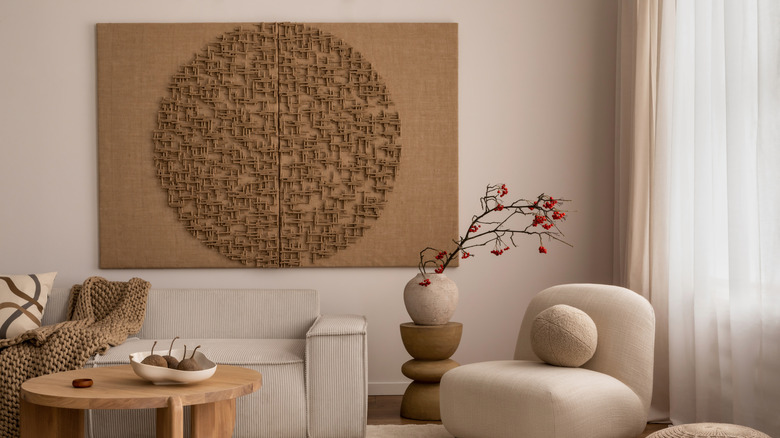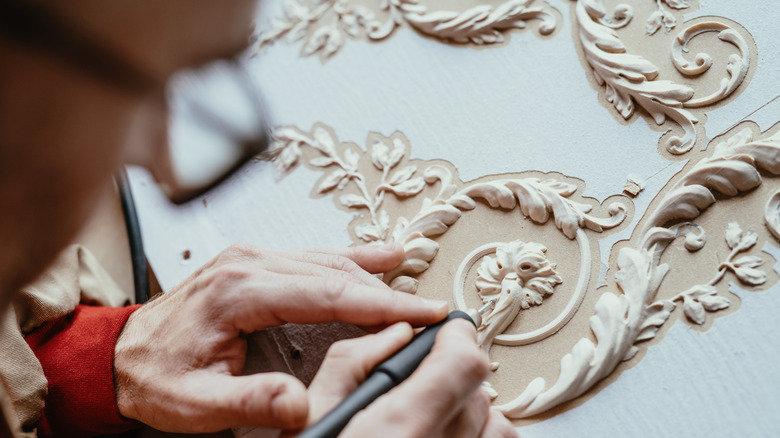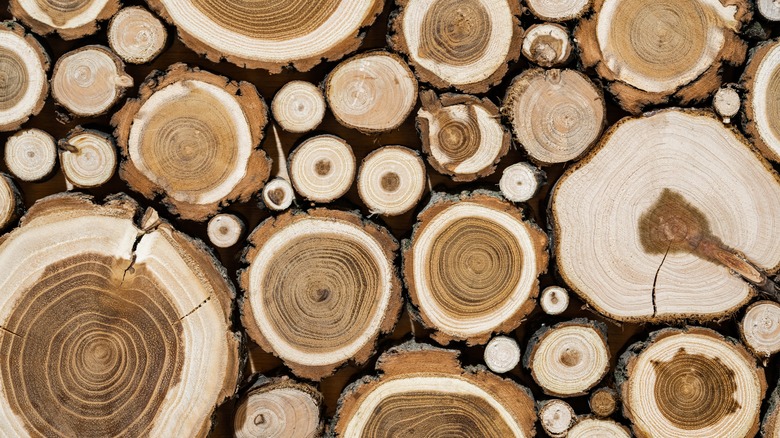How To Use Wood Wall Art To Emphasize Natural Beauty In Your Home
If you're looking for a nature-inspired, sustainable piece of wall art, there's nothing better than natural wood. While you might be used to looking at wooden wall pieces that have been stained or painted, there's a certain kind of organic appeal that comes with natural wood wall art: branches, logs, blocks, or live-edge pieces that haven't been covered up or painted over. Adding this type of art is among the design tricks to make your home feel more warm and cozy. Wood pieces can be as simple or as complex as you want them to be, and while some kinds of wood can be very expensive, wooden wall art can just as often be cost-effective, especially if you're able to source the wood yourself.
Botanical, cottagecore, and biophilic interior décor trends have been on the rise in 2025, and wooden wall art fits in perfectly with these aesthetics. But it's also an elegant choice for homes that like to live a little more on the modern side; there's nothing that says sustainable luxury better than a beautiful piece of live-edge wood, for example. Those who want to use wood wall art to emphasize natural beauty in their home can do so by using nothing but a piece of natural wood. And everyone can rejoice over the fact that wooden wall art is durable, sustainable, and biodegradable — a nature-friendly way to bring a piece of the outdoors into your home.
What kinds of wooden wall art you should add to your home
There are so many different ways you can incorporate wooden wall art into your home. In its most natural form, large cuts of wooden logs, driftwood, unique branches, and wood blocks can all make a major statement on your wall of choice. These are the most organic types of wood — and these pieces can even be easy to source yourself via fallen foliage.
You'll also find many kinds of carved wood wall art. These pieces add intricacy and charming detail to the walls of your home. Anything from complex patterns to delicate scenes can all be found in a piece of wooden wall art. These kinds of art pieces naturally feel organic and even minimalist. If you find yourself going for a more neutral color palette or frequently changing the aesthetic of your home, wooden wall art can help you effortlessly match the kind of style you're going for.
There's really no aesthetic that doesn't fit in well with wooden wall art, however. Maximalist and cottagecore lovers should look to highly detailed pieces that pop with loads of flowers, patterns, and texture carved into each piece of wall art. You might opt for a huge block of wood with a lot of natural details — such as texture changes, veining, and cracks — or even incorporate wooden wall art into a larger display, such as by adding a reclaimed wood shelf or mantel.
How to source your wooden wall art sustainably
One of the most important considerations to make when you're sourcing wood wall art is sustainability. Wood wall art can be an eco-friendly practice in and of itself when it is made with reclaimed wood. There are lots of different kinds of reclaimed wood you can look for depending on what style of wood wall art you'd like to incorporate into your home. Driftwood can make a rustic and unique hanging piece, while round wood pieces cut from fallen branches or logs have a homey cabin feel that can be as small or as large as you want. Reclaimed wood that's been sourced from previous projects — like infrastructure that has fallen into disuse — can be used as a full wooden accent wall or to highlight a small section of a room, like you would with shiplap.
You can find wood art yourself, or purchase it from sellers who source wood naturally. Don't forget that sourcing wood yourself from a beach or forest might not be legal depending on the area. There may be limits to where and when you can gather wood, if you're allowed to take anything out of the forest at all. Driftwood is often legal to source from the beach (with some stipulations), whereas large logs and wood pieces from forests are much less likely to be legal to harvest without a permit. Respect the land by following your local guidelines and purchasing wood commercially if you're not able to gather from the land. If you're purchasing a commercial wooden art piece, always look for the Forest Stewardship Council certification; this proves that the forest your wood was harvested in is sustainable and responsible.


